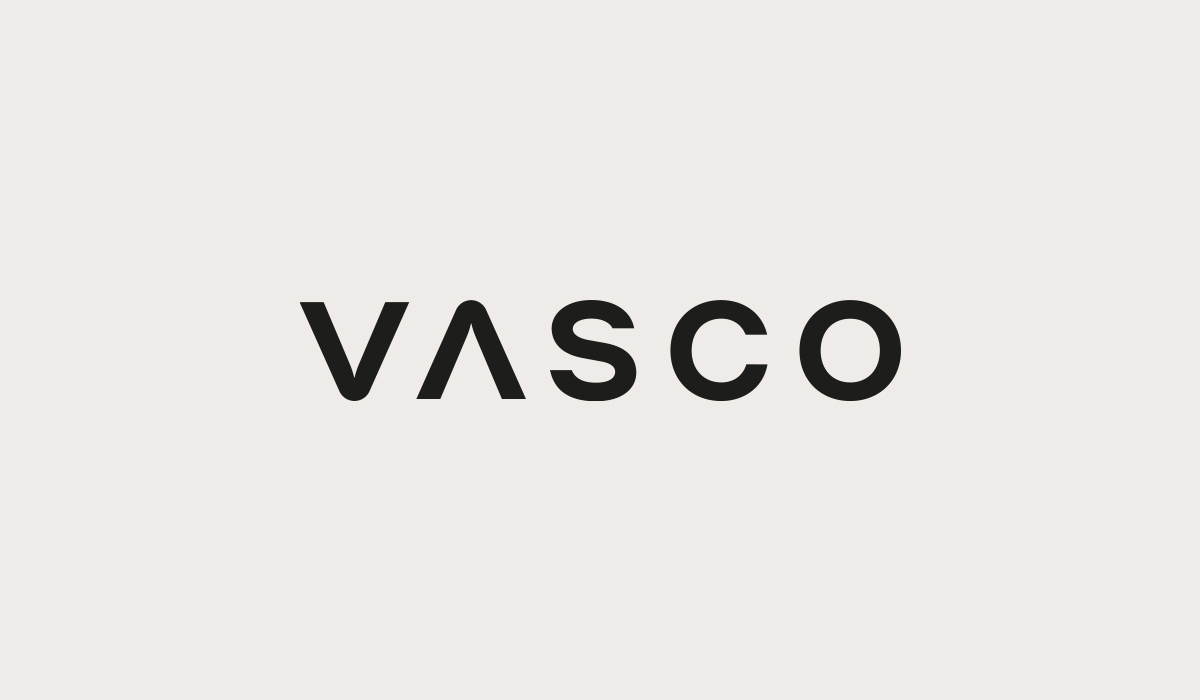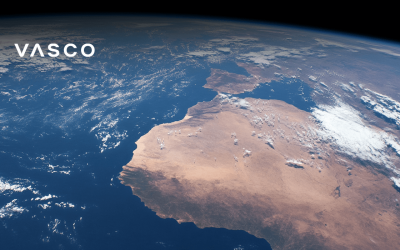What alien tongues teach us about understanding one another and how modern tech brings that fantasy to life?
Table of Contents:
“To boldly go where no one has gone before” — that’s the mission of the USS Enterprise. But between interstellar exploration and alien diplomacy, one thing remains constant: language. In the world of Star Trek, languages aren’t just background noise; they’re central to the story — the bridge (and sometimes the barrier) between civilizations.
Created by Gene Roddenberry in the 1960s, Star Trek is one of the most influential sci-fi franchises of all time. It introduced us to a hopeful vision of the future where humanity explores the galaxy, encountering new civilizations and their languages. The show’s legacy runs so deep that some of its invented tongues, like the Klingon language and the Vulcan language, have grown into full-fledged languages in Star Trek studied and spoken by fans worldwide.
Why these two? Because they represent more than alien sounds — they embody entire ways of thinking.
Welcome to the world of Klingon vs. Vulcan: two cultures, two philosophies, and two very different linguistic legacies.
Klingon Language:
Growls, Glory, and Grammar
If you’ve ever wanted to shout like a space warrior, the Klingon language might be your new favorite hobby. Harsh, guttural, and packed with consonants that feel like weapon impacts, Klingon language is the official language of honor, battle, and bragging rights in the Star Trek universe.
But what is Klingon language?
It started as a handful of guttural sounds for TV episodes. The creators needed an alien tongue that sounded tough, so they invented some grunts and clicks.
However, it was linguist Marc Okrand who, in the 1980s, transformed those raw sounds into a full-fledged constructed language (conlang). Unlike most sci-fi gibberish, Klingon has its own grammar, vocabulary, and syntax — enough to hold conversations, write poetry, or even translate Shakespeare.
Yes, you read that right. You can find entire versions of Hamlet and Much Ado About Nothing in Klingon. All thanks to the Klingon Shakespeare Restoration Project, run by the Klingon Language Institute — a group founded by passionate fans promoting how to learn Klingon and expanding its use far beyond the screen.
So, is Klingon a real language?
Absolutely! While it’s a fictional language created for a TV show, it functions like a natural language with complex rules.
How does Klingon language work?
It follows a unique set of grammatical rules quite different from English or other natural languages:
- Sentence Structure: Klingon sentences typically follow an object-verb-subject (OVS) structure, which is rare among human languages. For example, instead of “I see you,” a Klingon might say “You see I.”
- Agglutinative grammar: Klingon words are built by adding multiple prefixes and suffixes to base words, encoding complex meaning in single terms.
- Sounds: The language features unusual consonants like q, tlh, and a glottal stop ’, which can be challenging but fun to master.
- No direct equivalents: Some common English concepts don’t have exact Klingon counterparts, reflecting the culture’s warrior ethos. For example, there’s no exact word for “please,” since Klingons are straightforward and blunt. And if you’re wondering how to say hello in Klingon, the answer is: you don’t — there’s no direct equivalent, because Klingons prefer to skip small talk.
Because of this rich structure, many people have successfully learned to speak the Klingon language fluently. There’s even a detailed Klingon dictionary (the most comprehensive resource) written by none other than Marc Okrand, available both in print and online, plus a dedicated Klingon wiki full of vocabulary, grammar tips, and cultural notes for learners.
This makes Klingon one of the most developed fictional languages ever created — spoken at conventions, used in fan fiction, and embraced by linguists worldwide.
FAQ
Is Klingon a real language?
What is hello in Klingon?
Can you actually learn to speak Klingon?
Is anyone fluent in Klingon?
Is there a Vulcan language?
Is Klingon speakable?
Vulcan Language: Logic, Serenity, and Syntax
On the other side of the languages in the Star Trek spectrum is the Vulcan language — calm, measured, and shaped by a culture that prizes logic and emotional control above all else.
The Vulcan language mirrors the Vulcan philosophy. It sounds more melodic and fluid compared to the harsh Klingon. It is used in formal rituals, deep meditations, and expressions of friendship and wisdom. However, unlike Klingon, the Vulcan language was never fully developed by the show’s creators. Instead, fans and linguists have expanded it over the years, inventing vocabulary and grammar based on fragments from the show and extended universe.
The Vulcan Language Institute (VLI) played a key role in the whole process. Founded by fans with a love for Vulcan philosophy and language, the VLI has worked to organize and expand Vulcan into a more cohesive linguistic system. Drawing from canonical phrases, extended universe texts, and speculative grammar, they’ve developed learning materials, dictionaries, and writing systems that make Vulcan more accessible to curious learners.
How does Vulcan language work?
While Vulcan lacks the fully codified structure of Klingon, there’s enough material to outline how the language might function:
- Sentence structure: Vulcan grammar follows a subject-object-verb (SOV) word order, which fits with Vulcan’s formality. So instead of “I seek peace,” a Vulcan might say “I peace seek.”
- Precision in vocabulary: As a culture rooted in logic, Vulcan avoids vague or emotional language. There are often multiple terms for truth, reason, or understanding — each with subtle differences in tone and context.
- Sounds: Vulcan phonetics are smoother and more vowel-rich than Klingon. Long syllables, soft consonants, and rhythmic patterns reflect the calm, deliberate nature of Vulcan speech.
- Script and writing: Vulcan features elegant, calligraphic alphabets. The VLI has helped standardize symbols based on onscreen appearances, allowing fans to write or decorate in authentic Vulcan script.
You won’t find Vulcan versions of Shakespeare (yet), but the language lives on in a growing online ecosystem, including fan fiction, ceremonial chants, meditative phrases, and even experimental translation tools.
So, is Vulcan a real language?
Not in the strict conlang sense, but it lives as a collaborative project, enriched by cultural imagination, fan dedication, and the desire to bring Vulcan dialogue to life with structure and meaning as part of the rich tapestry of Star Trek languages.
Klingon vs. Vulcan: Warriors vs. Philosophers
The Klingon vs. Vulcan debate isn’t just about which alien language sounds cooler. It’s a clash of cultures expressed through words.
Whether you’re drawn to the fierce honor of the Klingon tongue or the calm wisdom of Vulcan speech, exploring these Star Trek languages offers more than just words — it opens a window into two very different ways of seeing the universe. For fans and linguists alike, learning Klingon or Vulcan is a way to connect more deeply with the stories and cultures they represent.
To show how these worlds diverge in everyday speech, here’s a side-by-side comparison of common phrases in English, Klingon, and Vulcan:
| English | Klingon | Vulcan | Side Notes |
| Hello | (not used) / nuqneH | Na’shaya | Klingons don’t use greetings like “hello” – nuqneH means “What do you want?” and is used only when someone initiates a conversation. Vulcan has formal greetings like Na’shaya. |
| Goodbye | Qapla’ | Dif-tor heh smusma / Sha’veh | Qapla’ means “Success!” – often used as a farewell. Vulcan Dif-tor heh smusma means “Live long and prosper” (formal), while Sha’veh is a shorter, informal variant (less canonical). |
| Thank you | tlho’ | Ki’nam | Klingons rarely say “thank you” – it’s seen as weak. tlho’ exists but is rarely used. Vulcan Ki’nam expresses gratitude, usually in formal or diplomatic contexts. |
| Please | (not used) | (no direct word / contextual) | Klingon culture doesn’t use polite requests. Vulcan has no standalone word for “please” – politeness is conveyed via grammar and phrasing. |
| Home | juH | Vahrk | juH is the standard Klingon word for “home”. Vahrk is one Vulcan word for home, but other forms exist depending on dialect and nuance. |
| Friend | jup | Teretuhr | jup is the Klingon term for friend. Vulcan Teretuhr refers to someone with whom you share a logical or meaningful bond – less emotional than in human terms. |
The crew of the Enterprise often navigates this spectrum — from shouting Klingon battle cries to offering Vulcan greetings — reminding us that language reflects culture, history, and worldview.
Ready to Learn Klingon or Vulcan?
Curious about how to learn Klingon? Or maybe you’d like to learn Vulcan language and explore its logic-driven elegance? You’re not alone.
There are fan-made courses, forums, and even detailed dictionaries to guide you through these fascinating Star Trek languages. For beginners, using a Klingon language translator or a Vulcan language translator can be a fun way to practice new phrases and get familiar with the structure.
Whether you’re a linguistics nerd, a Star Trek fan, or just language-curious — these tools make it easier than ever to dive in.
Bridging the Language Divide: Translations in Star Trek
With such big differences between the Klingon and Vulcan languages, it’s no surprise that communication in the Star Trek universe can get complicated. Picture the crew of the USS Enterprise trying to negotiate peace, share knowledge — or just say hello — while navigating a galaxy full of alien dialects and unfamiliar customs.
These language gaps aren’t just science-fiction problems. They reflect real-world challenges of understanding across cultures.
That’s exactly why Star Trek introduced the Universal Translator, a clever piece of tech designed to break down barriers and help people connect, no matter what language they speak.
From Sci-Fi Vision to Reality: Tech and Translation
The Universal Translator started as a clever solution to a practical TV problem — how do you show alien communication without boring viewers with subtitles? But as Star Trek evolved, so did the translator’s significance. It became a symbol of a future where communication flows effortlessly, where empathy becomes possible across species, and where technology brings cultures together instead of driving them apart.
What seemed like pure fantasy decades ago is becoming surprisingly real. Thanks to advances in AI, machine learning, and speech recognition, today’s translation technology can provide instant interpretation across dozens of languages. Modern devices like the Vasco Translator V4 offer unlimited internet-based translations — handling text, voice, and photo translation — while the Vasco Translator E1 earbuds provide hands-free translation for truly seamless communication.
We’ve gone from imagining universal translators on starship bridges to carrying them in our pockets. Star Trek envisioned this technology as something centuries in the future, but companies like Vasco prove we don’t need to wait for the 24th century — that future is already here.
Exploring New Worlds, One Word at a Time
Whether you’re drawn to the fierce intensity of the Klingon language or the calm logic of the Vulcan language, these Star Trek languages remind us how deeply culture shapes communication. They show us that language is not just a tool for speaking, but a way of seeing and understanding the universe.
Star Trek’s vision of universal translation imagined a future where language barriers wouldn’t limit human connection. Today, as technology advances and real-world translators become increasingly sophisticated, that vision feels closer than ever.
By exploring these alien tongues and diving into the ongoing Klingon vs. Vulcan debate, we’re not just celebrating creative science-fiction. We’re gaining genuine insights into how language shapes identity, culture, and connection — both in the vastness of space and in our everyday lives here on Earth.
In the end, language is a bridge between worlds, inviting us all to better understand one another.











